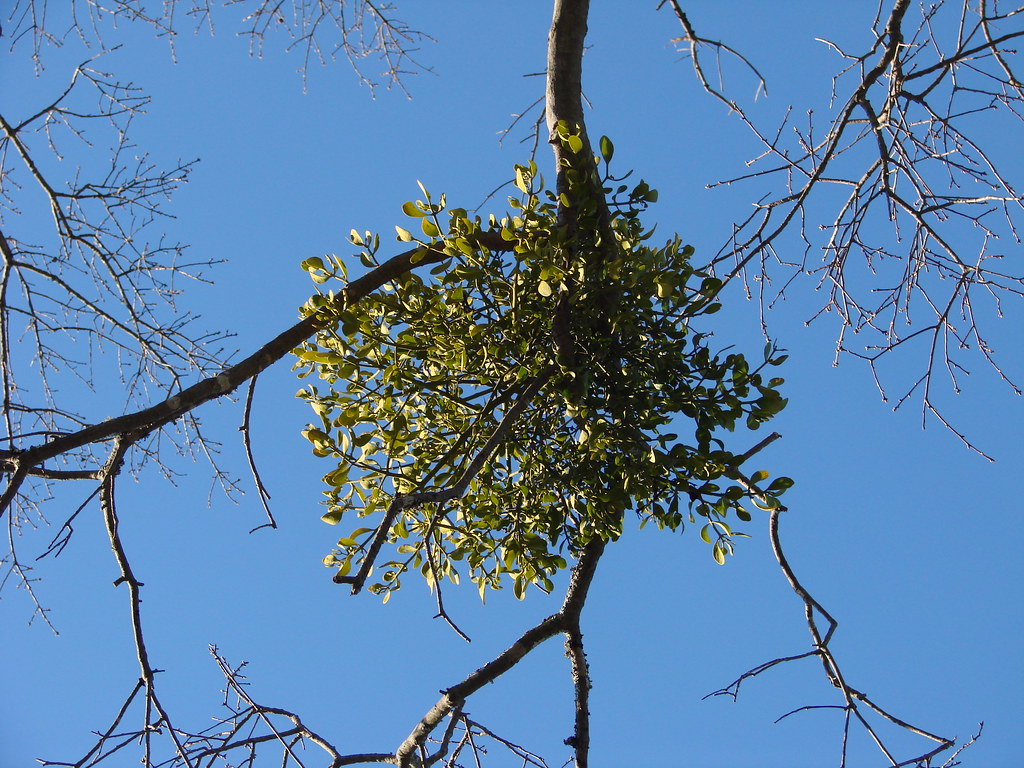As we take joy and delight during the holidays, celebratory plants are all around us. Fir trees decked with lights, ribbon, and ornaments stand proudly over presents. The elegant scarlet leaves of poinsettias grace windows and doorways.
But one of the most prized plants that suddenly comes into the spotlight during this season makes going through doorways perilous–mistletoe.
The traditions of both purposeful and stolen kisses under mistletoe can be traced back to the 1700s in England. In the next hundred years, the tradition firmly took root in the United States too.
But, before you start limbering up your lips, it’s worth examining the natural value that can be overlooked when traditions are inherited through generations of affectionate gestures.
There are 1,300 species of mistletoe across the world; the continental United States and Canada have 30 of those species. The islands of Hawaii are home to another six. Despite their widespread range, this plant has not escaped habitat loss. More than 20 of the species are endangered. The one we see around the holidays is European mistletoe (Viscum album).
While not actually having anything to do with the tradition, you could consider that mistletoes kiss their hosts. “Kiss” may be an understatement; mistletoe is a parasite. When a seed lands on a branch it sends out roots that penetrate the bark and access the tree’s nutrients and water. It also has the ability to photosynthesize and make its own energy, but typically uses the resources of its host.
The host plant usually dies.
Before cursing the plant and casting it away, understand it is a very important plant to wildlife within their habitat. Pollinators like bees and butterflies feed on its nectar. Several species of hairstreak butterflies depend on it as a host plant. They lay eggs on the leaves for caterpillars to eat once they hatch.
In the fall, its berries are sought after by deer, birds, squirrels and porcupines. Having a food source in early winter is critical for wildlife to survive the season when most food is scarce. Chickadees, wrens, mourning doves, spotted owls, and Cooper’s hawks use it for shelter.
Mistletoe has sticky seeds that hitch a ride on those birds and mammals. Its name comes from an observation by Anglo-Saxons who noticed it grows near bird droppings. “Mistel” means “dung” and “tan” means “twig.” But calling it “dung on a twig” is not very romantic.
Another name for the plant is “witches’ broom.” Mature mistletoe look like large round growths with branches growing in all directions. They can be 5-feet wide and up to 50 pounds in weight. Several species of tree squirrels use the densely clustered stems as nests.
In 1952, 13-year old Jimmy Boyd topped the charts with the classic, “I Saw Mommy Kissing Santa Claus.” Now, whenever you hear that earworm song on the radio, perhaps you can fill in the rest of the lyrics “…underneath the ‘dung-on-a-twig’ last night…” and remember also that the plants we use as part of seasonal festivities are celebrated year-round in nature.
Kelley V. Phillips is the Communications & Outreach Manager for Red-tail Land Conservancy. She strives to cultivate wonder in nature and action to protect it.
Photo: European mistletoe by Christian Werner ZH




